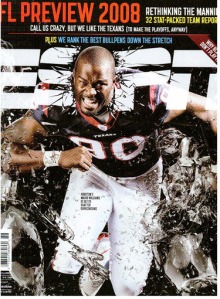Why isn’t this problem resolved?
Modelling theory is based on social learning theory. It
explains that exposure to models of behaviour in mass media provides individual
with a learning form of action which could become part of the person’s manner
of coping with recurring problem. In this case, young female sports athletes
out there would see their models being portrayed as a sex object rather than an
athlete and therefore modelling after their models, in future they would not
mind being portrayed in such a manner. They might feel that it is a norm for
female athletes to be shown as hot, sexy and revealing compared to tough,
skilled and confident. The problem with this is that, in the end no one would
voice out and say this is unfair to women athletes. Everyone would go along
with the media portrayal because they see their role models doing the same and
they might have the mentality that, ‘if my role model doesn’t mind being
portrayed in this way then I should not mind it too.’ This would only happen if
their role model has a huge influence on them.
Another theory that might explains this problem for not
being solved is the agenda setting theory, where the media uses its powerful
influence to tell the audience of what issues are important. Public perceived
certain issues as more important than the other issues because media
concentrate only on a few subjects and issues. If the portrayal of female
athletes were ever a problem to the media then they would definitely voice it
out, but sadly, the mass media is fine with this kind of portrayal and
therefore people would not even notice what the reality is. If mass media just
brings up this topic once, then we would be able to see the difference in the
way people react to this, especially female athletes. They would start
realising it and stop doing such photo shoots (being shown as hot with
revealing clothing or to the extent of nudity) and female athletes would
get the respect that they deserve. If one decides to take an action and change
this perspective of female athletes then the rest might follow. It is either we
leave it as it is or someone takes the responsibility to change it.
The media shows us only one version of the reality, not
reality itself, through the media representation theory. If media changes this
theory and shows the real reality of female athletes then the portrayal of
female athletes would not be a problem anymore. It is due to this one version
of reality that a lot of people tend to blindly believe everything the media
says and shows and therefore not wanting to voice out any opinions if they had.
I personally believe that if media changes the media
representation theory; one version of reality to showing the reality itself,
then not only will the portrayal of female athletes be solved, but other issues
too. Media has a huge influence on us but we should not agree to whatever the
media is doing. We should be able to differentiate the good and the bad.
I personally believe that if media changes the media
representation theory; one version of reality to showing the reality itself,
then not only will the portrayal of female athletes be solved, but other issues
too. Media has a huge influence on us but we should not agree to whatever the
media is doing. We should be able to differentiate the good and the bad.













